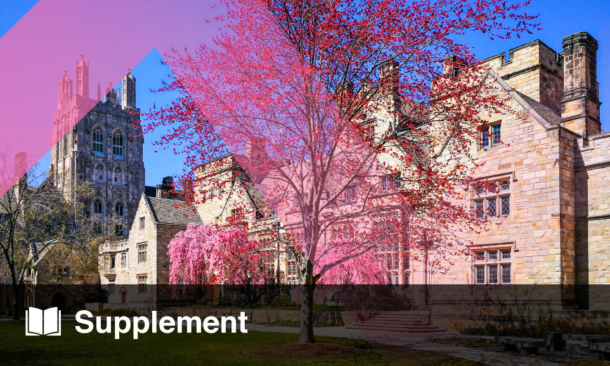Henne Holstege | Head of Section, Genomics of Neurodegenerative Diseases and Aging, Amsterdam University Medical Centre, the Netherlands
Citation: Neurol AMJ. 2024. https://doi.org/10.33590/neurolamj/CEVG1065.
![]()
After completing your PhD at the Netherlands Cancer Institute, what inspired you to apply your knowledge of molecular genetics to the development of neurodegenerative diseases?
My PhD involved investigating the genetic changes that occur with breast cancer. During that time, I realized that the focus of breast cancer research lied completely on the disease state of the mammary gland. But being a woman, I realised that my mammary glands were subject to hormonal changes throughout my cycle. Digging a little deeper, I found that during our female cycle, the mammary gland is subject to enormous changes. This led me to quesion, should we not take the normal cycling mammary gland into account when we are prescribing medications? However, at that time, there was no real interest in that aspect of disease: what is normal? I found that so odd.
Before my PhD, I had done an internship at Harvard Medical School, Boston, Massachusetts, USA, doing brain research, and that really stuck with me. The brain is the part of our body that makes us who we are. Then, with the passing of Mrs. Hendrikje van Andel Schipper, who was 115 and sharp as a tack, I decided to turn my focus to the ‘normal’ brain. I found reports of several families in which multiple members reached extreme ages combined while maintaining their cognitive health. As I was trained as a genetic researcher during my PhD, I became interested in identifying genetic factors that are associated with maintaining cognitive health. At this time, I moved to the Amsterdam Medical Centre, the Netherlands, and decided to set up the ‘100 plus Study’ to understand what the normal brain looks like and how it is possible that some people maintain cognitive health into very old age.
Your lab focuses on identifying genomic factors underlying the risk of neurodegenerative diseases, particularly Alzheimer’s Disease. What have you discovered about the protective genetic elements that help some individuals maintain cognitive health into extreme old age?
When we had collected a cohort of cognitively healthy centenarians that was large enough to investigate genetically, we investigated which Alzheimer’s disease-associated genetic regions are more prevalent in cognitively healthy centenarians versus controls. We found that, relative to the middle-aged population, centenarians were strongly enriched with protective elements, but that the levels of enrichment were different between genetic loci. Those regions that were most strongly enriched in centenarians encompass genes associated with the endolysosomal system, specifically the GRN, SORT1, and TMEM106B genes, and the immune system (PLCG2). Now we want to understand what is so important about these genetic regions, that they have this strong protective effect against neurodegenerative diseases. I hypothesize that protective regions are less vulnerable to age-related changes. Methylation status, for example, changes with age and that may affect genetic expression levels. Protective alleles may be differentially vulnerable to such changes, thereby maintaining expression levels reflective of younger individuals.
Can you explain the significance of the SORL1 gene in Alzheimer’s disease, and what are your goals in implementing clinical counselling strategies for carriers of pathogenic variants in this and other genes?
We find that very rare, dangerous genetic variants in the SORL1 gene may be causative for Alzheimer’s Disease. In the cell, SORL1 traffics other proteins from the endolysosomal system back to the cell surface, or to the trans Golgi network. If you don’t have SORL1, that trafficking will go awry, and then proteins will accumulate in the lysosomal system. This can be seen as large vesicles full of stuff that can’t be trafficked in or out, which we think contributes to cellular dysfunction and eventually to Alzheimer’s disease. Because it is challenging to perform segregation analyses in pedigrees in which multiple generations are affected with Alzheimer’s Disease, we have not yet been able to confirm whether a dangerous variant in SORL1 leads to an Alzheimer’s Disease with an autosomal dominant inheritance pattern. Therefore, we have investigated the risk of subtypes of SORL1 variants by comparing their occurrence in the genomes of thousands of Alzheimer’s disease patients and thousands of controls that do not have dementia. I think that now we are at a stage where we know which variants are causative for disease, so we need to start the discussion of whether carriership of such variants should be revealed to patient-carriers and their families in the clinic, in addition to the other autosomal dominant Alzheimer genes PSEN1, PSEN2, and APP.
What advice would you give to young healthcare professionals and researchers entering the field of Alzheimer’s?
I think it is important to put what you are focusing on in the broader context of things. For example, if you’re looking into one gene, you must understand that its function contributes to a mechanism involving many, many other proteins. Understand that there’s always something upstream and always something downstream. I find this the most difficult thing to do, but I also think that it’s a lot of fun to look at my results that way. This approach will also allow you to gain a deeper understanding of what is really going on. I don’t believe that I will ever achieve a full understanding of mechanisms, because the complexity is mind-boggling, and the field progresses so fast. Nevertheless, we should thrive to understand the impact of our results in the broader context.
In your opinion, what are the most critical areas of focus for future research in Alzheimer’s care, and how can the scientific community better collaborate to address the growing burden of this disease?
Since most neurodegenerative diseases are age-related diseases, I think we need to get a better understanding on the effects of increasing age on the different cell types in the brain. What unites these age-related changes? Why are some people more vulnerable to specific age-related changes than others? How is their genome and lifestyle involved? I see an important future role for using a person’s genetic constellation to predict who will benefit most from which therapies, preferably before onset. But before we get there, there are several important ethical hurdles to take. However, the development of antibodies that can remove amyloid from the brain has been a complete game-changer in the field of Alzheimer’s care, and this may accelerate the use of the genomics to predict individual benefit or vulnerability to side-effects.
Can you highlight a few key findings from the meeting that you believe will significantly impact clinical practice?
I’ve been really amazed by the finger prick test. This will allow us to monitor what’s going on in the population through a simple finger prick. This large-scale testing could help us identify who is more susceptible and what has changed in the plasma of these individuals. I think this is such a leap forward, in combination with the amyloid therapies it is an absolute game-changer.
How do you plan to integrate the insights and discoveries presented at the meeting into your practice at Amsterdam University Medical Centre?
I will take forward a better understanding of plasma biomarkers. Can we already observe differences between the offspring of centenarians and ‘normal’ ~75-year olds? Specifically, can we already see whether those who are enriched with protective genetic elements differentially express these blood-based biomarkers?
Can you tell us a bit about the plenary session you presented at the Alzheimer’s Association International Conference (AAIC)?
It was absolute honor to show our work on our centenarian cohort to this large audience of colleagues. My take-home message is that it is possible for us humans to reach extreme ages without cognitive decline, and that the cognitively healthy centenarians from our 100-plus study can show us how that can be achieved. I showed that centenarians are genetically protected against Alzheimer’s disease, and I set out to show that these protective elements might be less vulnerable to age-related changes. Our data suggests that the brains of centenarians are up to decades younger than expected by their age. Now we need to connect the protective genetic elements with the ‘younger’ protein constellation: this will be the focus of my research endeavors; I am not out of a job yet.








